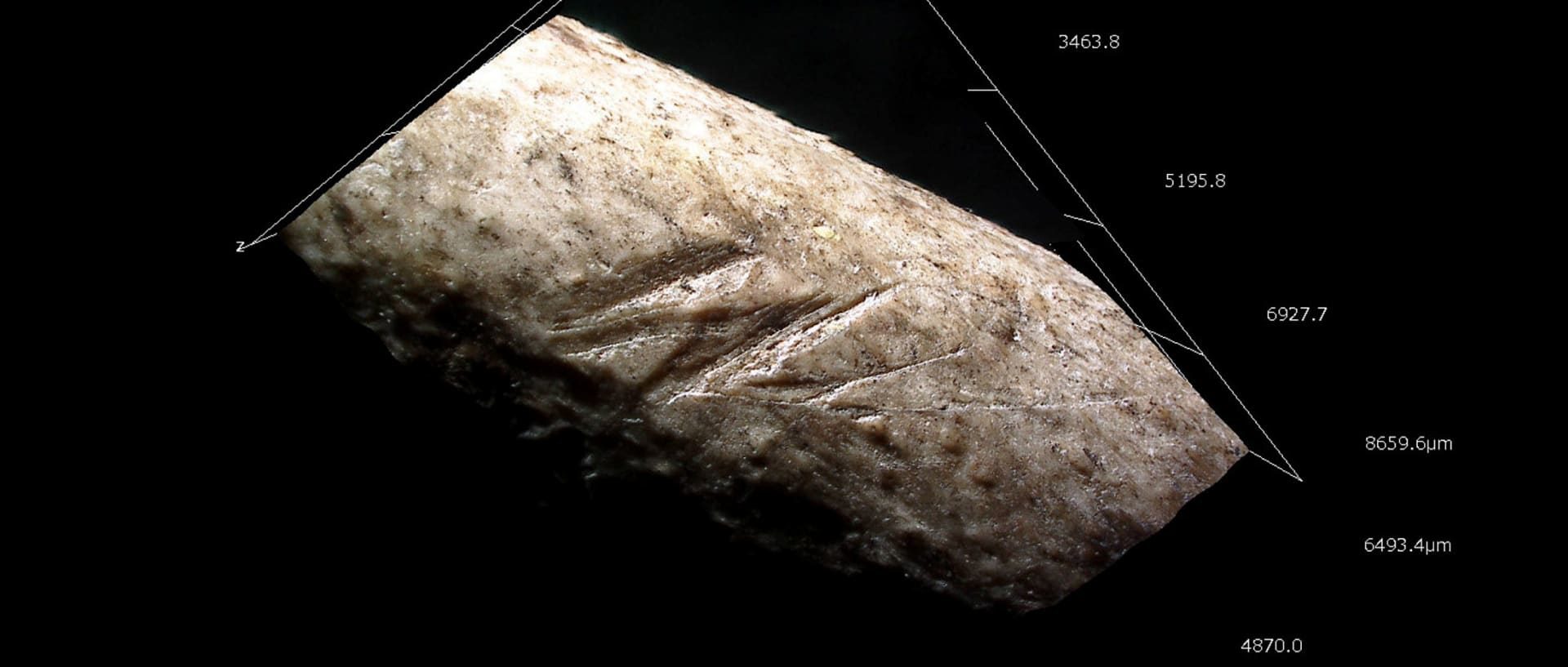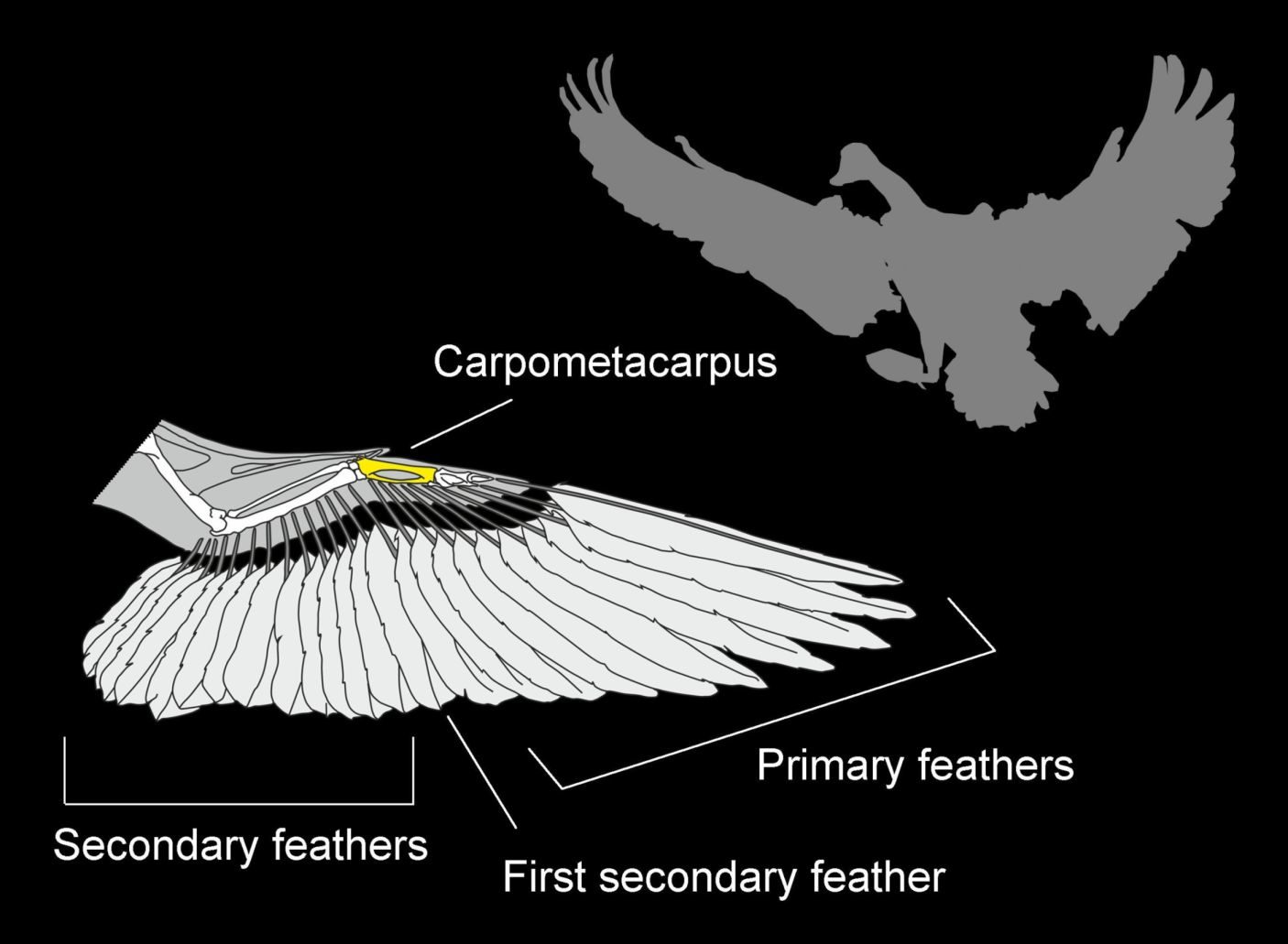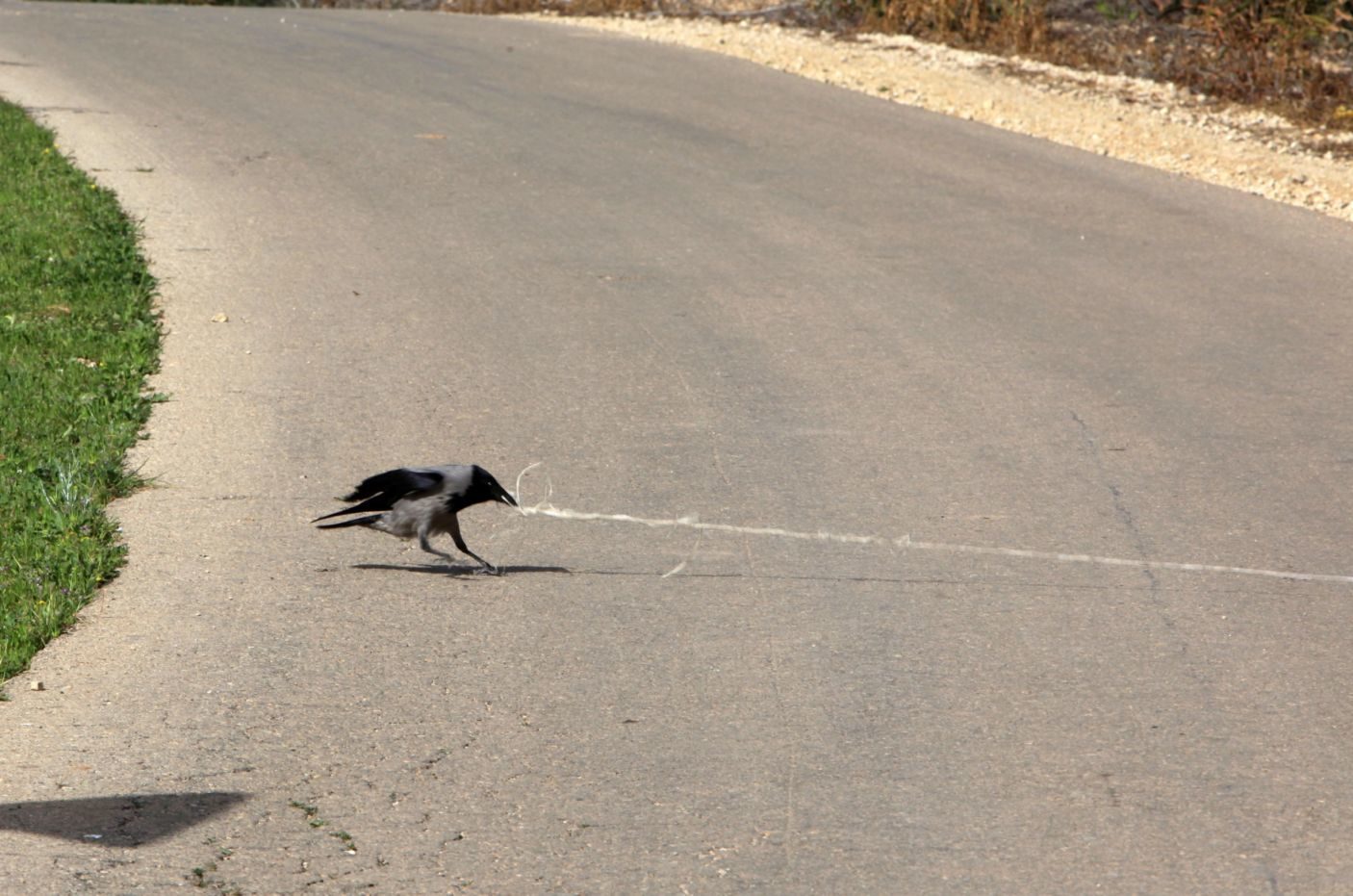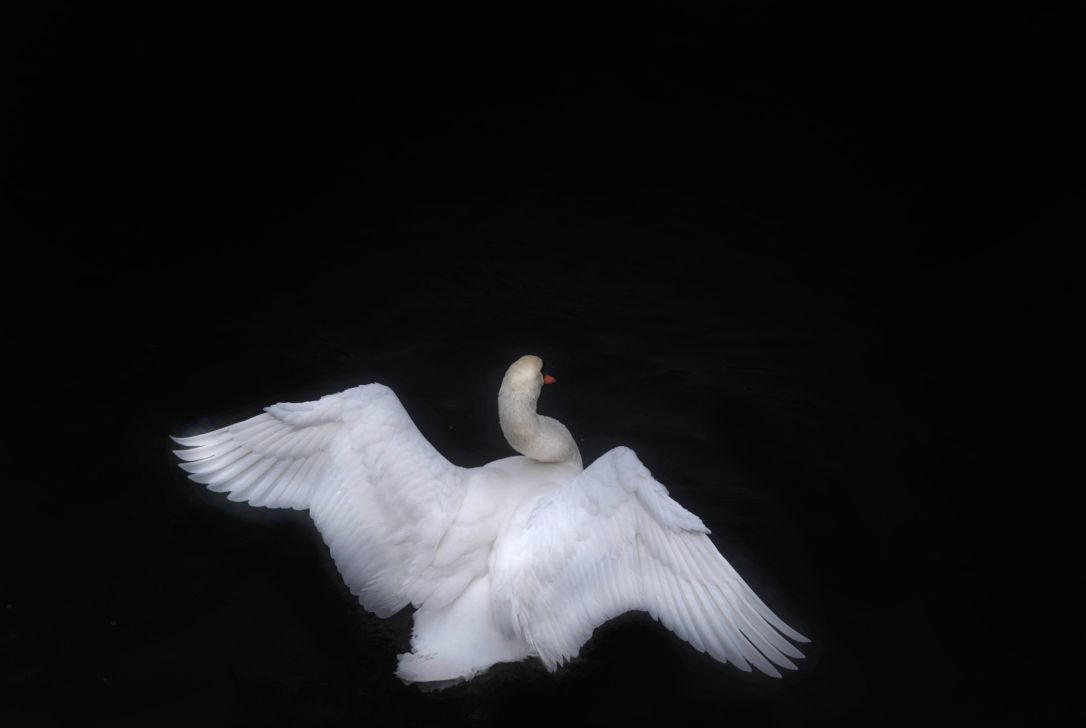
New evidence found at Qesem Cave, a Paleolithic site occupied on and off from about 420,000 years to 200,000 years ago, indicates that the hominids living there were going to some effort to remove the feathers from their prey.
That practice adds to indications from other sites throughout the history of human evolution that our ancestors not only exploited their environment but appreciated it too, says the team.
"They wasted nothing," says Prof. Ran Barkai of Tel Aviv University, one of the explorers of Qesem Cave. When elephants were eaten (and they were), their bones would be turned into non-utile tools, indicating a compulsion to use all parts of the animal. Bird flesh would be consumed, tendons could be utilized as string, bones as tools, beaks and talons could be worn as pendants — and now it turns out the feathers were prized as well, according to the paper by Ruth Blasco, Avi Gopher and Barkai of Tel Aviv University, with Jordi Rosell and Antonio Sánchez Marco of University of Rovira i Virgili, due for publication in the prestigious Journal of Human Evolution.
All along, archaeologists have been confounded by the archaic human consumption of tiny, elusive animals like shrews, rabbits and birds. The wee (and aloft) creatures were sub-ideal as prey compared with elephant or aurochs (wild cattle), because they were hard to catch and had little meat. It's a huge bang for very little buck.
The question is, why would the archaic humans bother unless they were starving? Various evidence indicates this wasn't the case.
If the Qesem occupants had been butchering birds just for meat, we'd expect to find the human-made marks largely confined to meat-bearing bones like the thighs. But the team detected unmistakably anthropogenic cut marks on a swan wing bone (the carpometacarpal), which is effectively meatless.
Hundreds of thousands of years ago, somebody removed the swan's feathers — whether for decorative, sartorial or ritual use.
Chronologically, the remains at Qesem (pronounced "kesem") are about 20,000 years earlier than the earliest European evidence of archaic humans consuming such "fast food." On the other hand, Qesem isn't the earliest example of bird utilization: that was 600,000 years earlier in Spain.
Comment: Previously unknown "proto-hominid" species suggests ancestor of humans evolved in Europe not Africa
"But Qesem may represent a stage of cultural evolution in which complex relationships with a range of animals stepped up a notch," Barkai posits.
He personally doesn't think the archaic humans were sticking feathers in their hair for adornment, per se: feather utilization was neither a matter of aesthetics or ritual, in his view. "It was part of their relationship with animals," he tells Haaretz. "Every element in the world would have had a place for them. They wanted to connect with these environmental elements and gain their powers."
Maybe. Separate studies have suggested that Neanderthals in Zaskalnaya, Crimea, adorned themselves with raptor talons and feathers. And a Neanderthal may have carefully carved a raven bone with seven notches 40,000 years ago in that same place (note that they are much, much later than the Qesem discoveries). The scientists behind that research argue that the marks on the raven bone couldn't have originated in butchery.
Critics have pointed out that despite some character to the notching, it need not be art or even symbolic. It could have just made the raven bone a lot easier to grip. But anyway.
The swamps of central Israel
Qesem Cave is about 10 kilometers (6 miles) from Tel Aviv, as the entrée flies. Originally at least, it was huge: 12 meters (nearly 40 feet) in height. Over its period of occupation, starting about 420,000 years ago until about 200,000 years ago, it gradually filled up with stuff the archaics were lugging home, the dirt of ages and whatnot, Barkai says.
That would explain why this delightful cavern in a lush area bursting with life was abandoned about 200,000 years ago. "There was nowhere to live," he says. "The last people there could barely stand up."
Those 220,000 years of occupation were also marked by ecological transformations in the Levant, and advancement by the hominids. They began to habitually use fire; they improved their acquisition of raw materials by actively quarrying flints and making finer blades; and, whether because of all this or not, the big herbivores, notably elephants, disappeared. (Deer is not considered a big herbivore and survives in the region to this day.)
"In the midst of this convulsive period, the specific processing of some birds also seems to emerge in the case of Qesem," the researchers write: defeathering. If their interpretation is correct, it could support the argument for links between biological and cultural evolution in humans.
Which begs the question, who lived at Qesem? Separate work by Prof. Israel Hershkovitz and others suggests that teeth found at the site demonstrate both modern human and Neanderthal features — and the only thing that can be said is they were not Homo erectus. They seem to be a type similar to the hominins found elsewhere in Israel at Qafzeh and other sites: early modern humans.
Of course, given the extreme scarcity of hominid fossils, it can't be ruled out that a whole host of hominid species lived in the cave.
Paleolithic Swan Lake
Environmentally, the bird population at the time, as deduced by the bones at Qesem, indicates that central Israel was wetter then. The archaic people may have lived by a long-gone lake or wetlands, which would have been thronged with birdlife, and swarming with animals of all sizes. It seems that in the case of larger prey such as deer, butchery was done elsewhere and only choice parts were lugged to the cave for final carcass processing — as was the case with the swan wing.
The bottom line is that the Qesem inhabitants sensibly preferred to eat big animals but ate copiously of the small ones, and also appreciated a nice tortoise cooked in the shell. Those were dead easy to catch: all you have to do is bend over.
How they caught birds is less obvious. The arrow hadn't been invented yet, nor, presumably, falconry. Trapping is one possibility, Barkai points out. So is lurking by nests. And even though the fossil record is a very imperfect tool and delicate bird bones don't preserve well, those of 14 bird species were found at Qesem.
Comment: See:
The list includes tasty pigeons and minute starlings (one of which shows human gnaw marks), as well as ravens, a swan and a petrel.
Those last few may indicate a goal other than cuisine.
Nowadays, people tend to eschew swan less because they're beautiful and rare, and more because they're tough and don't taste like chicken.
"There's no doubt they ate everything they could — everything including birds," says Barkai. "It's true there's only one swan bone [found so far], and that's a very rare find. We have no idea where the swan's other bones got to. But the special aspect is that there was nothing to eat on that bone. The only thing they could do with it is remove its feathers."
It's an open question if they ate the ravens or predatory birds in general, he adds: "But both the swan and raven are considered to have special significance in society to this day. There's no reason to think they didn't have special meaning in the past beyond their nutritive potential."
Qesem may not be the oldest site where human predecessors caught (or scavenged) birds, Barkai sums up - that was in Spain and it was over half a million years earlier.
But Qesem may be the earliest known site where human predecessors meaningfully removed the feathers.
The earliest-known instance of feather removal after Qesem is in Europe, among Neanderthals, and that's less than 100,000 years ago, Barkai notes.
And why would any of them defeather dinner? "It was apparently for cosmological or ritual purposes. Maybe they thought that with the help of the feathers, they could gain the swan's characteristics," Barkai suggests — and that practice may have persisted to this very day.
Some thousands of years ago in Louisiana, an indigenous tribe adopted an original attitude toward the owl. While the peoples around them associated the silent nocturnal predator chiefly with death, the "Owl People" at Poverty Point (about 1750 to 970 B.C.E.) chose to emulate it, as described by Lee Bloch in the Journal of Social Archaeology: They erected large-scale earthworks that some think are shaped like an owl; they built an owl-shaped village and "could move in particularly owlish ways," Bloch wrote. There are owl figurines too.
To this day, the indigenous people living there, who identify themselves as being of Muscogee Creek ancestry, do an owl dance that, elders told Bloch, "are ways of acknowledging, honoring, renewing and 'giving breath' to the beings of creation, and in this case, Owl" — who can "see into the darkest of places, and the darkest place of all is the human heart."
Maybe the ancients at Qesem thought something similar about the raven and swan: dark and light, shadow and sun, secrecy and sincerity, who knows? And maybe that penchant for humanizing the birds' traits has continued from then to this day.

Isn't it a stretch to extrapolate from modern societies (relatively speaking) to hominin species that predated Homo sapiens? He does not think so.
"These are universal things. It's primordial," he explains. Respect for nature and their place in it — and maximal exploitation of prey animals — exists in every indigenous group everywhere, from Australia to the Americas to the Arctic, Barkai says.
"Shamanism exists in all groups too. So does rock art. Altered states of consciousness exist in all groups and always relate to their relationship with the world," he adds.
Maybe an altered state of consciousness could explain how a shaman decked out in swan feathers thought he was a swan.








To hunt, kill and eat animals. And not roots, leaves and berries ...